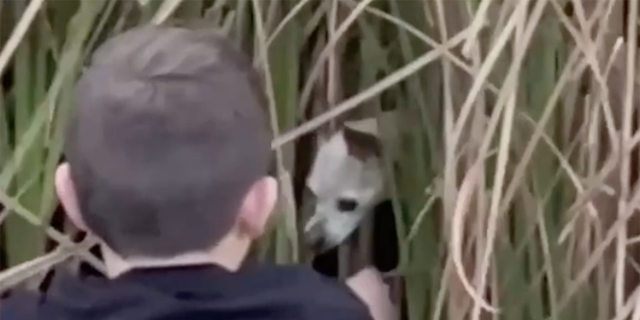Birds vary enormously in size and shape. The ostrich can grow up to 9ft tall. But what about at the other end of the spectrum? Here are the world’s 10 very smallest birds.

The class Aves, the taxonomic group containing all birds, is an astonishingly diverse one. Birds can be found on all of the world’s seven continents, from snow petrels of the South Pole to roadrunners of the Mojave desert.
The 11,000+ different species come in a dizzying array of colours and shapes, with disparate behaviours, habitats, and lifestyles. They may be completely flightless or spend almost their whole lives on the wing. They may burrow into the ground, dive into the oceans, or sunbathe on beaches.
They also vary vastly in size. There is a hefty 155kg weight difference between the smallest and largest bird, and a 3.7m difference between the smallest and largest wingspan. In this list we tell you all about the very smallest members of the bird class, their distribution, diets and fascinating lifestyles.
You can also take a look at some of our other articles to learn about the world’s strongest, loudest, and most intelligent birds. You may also want to view this gallery of photos that showcases birds in all their incredible and varied beauty.
10 smallest birds in the world (by length)
Bee hummingbird (Mellisuga helenae) – 5.5cm/1.95g

A tiny male bee hummingbird perched on a twig. © Manakin/Getty
You may be surprised to find out just how miniature a bird can be. The smallest bird in the world, the bee hummingbird clocks in at just 5.5cm in length (for males, females are slightly larger at around 6.1 cm). This also makes them the smallest warm-blooded vertebrate.
They weigh just 1.95 grams, about the same as a cashew nut. These perfectly petite birds can only be found in Cuba and feed on flower nectar. They may be mistaken for bees buzzing around their favourite blooms, hence the name.
Take a look at our hummingbird guide to learn more about this colourful group of birds.
Esmeraldas Woodstar (Chaetocercus berlepschi) – 6.4cm
Just slightly larger is the Esmeraldas woodstar, also a species of hummingbird. This whimsically named bird can be found only on the coast of west Ecuador, and is vanishingly rare, with an estimated population size of between 1000 and 2,700 mature individuals. This number is currently decreasing due to habitat loss.
Calliope hummingbird (Selasphorus calliope) – 7cm/2g

Young male Calliope Hummingbird hovering foraging for nectar in an arboretum in Idaho. © Mason Maron/Getty
The calliope hummingbird (starting to notice a theme here?) is the smallest native bird of the United States and Canada. At 7cm from beak to tail tip, it is about the length of a Bic lighter. Like most hummingbirds, its diet consists of a mixture of nectar and small insects.
They are named after the Greek muse Calliope, known for her ecstatically beautiful voice. The hummingbird call doesn’t quite live up to this perhaps, being more of a high-pitched zing noise.
Find out how birds are able to sing so tunefully here.
Costa’s Hummingbird (Calypte costae) – 7.6 cm/3.05g

A male Costa’s hummingbird with vibrant purple cap and gorget. © Monica Lara/Getty
The final hummingbird on our list is perhaps the most striking, the males of this species having a bright purple cap and throat, making them look like a particularly angry plum.
This vibrant plumage is used to striking effect in their courtship displays, when they carefully angle themselves so that the sun catches it, dazzling nearby females. They can be found in the southwestern United States and in Mexico.
Pale-billed flowerpecker (Dicaeum erythrorhynchos) – 8 cm/4g

Pale-billed flowerpecker with a fruit in its beak. © Niranj Vaidyanathan [email protected]/Getty
Less vibrant but almost as tiny is the pale-billed flowerpecker, an olive-green bird found on the Indian subcontinent. It has a mutually beneficial relationship with the mistletoe species Dendrophthoe falcata. In return for food – the mistletoe berries – this bird both pollinates the plant, carrying pollen from flower to flower, and aids in seed dispersal by voiding seeds intact after digestion.
Weebill (Smicrornis brevirostris) – 8cm/6g

Australia’s smallest bird, the tiny Weebil,l perched on a branch. © tracielouise/Getty
The aptly named wee-bill is a nondescript grey-and-yellow bird with a particularly stubby beak. It is Australia’s smallest bird.
The weebill is primarily insectivorous, feeding on beetles and flies, but sometimes also seeds. At just 6 grams, it is about the weight of a pencil.
Cape penduline tit (Anthoscopus minutus) – 8cm/8g

Cape penduline tit perched on a branch in Angola. © AGAMI stock/Getty
Found in southern Africa, this petite passerine is known for the nests they build from soft materials such as spider webs, sheep’s wool and plant fibres.
These nests are created as hanging globular bags, dangling, and swaying from tree branches. They also have more than one entrance, an open ‘false entrance’ that leads to an empty chamber, craftily constructed to baffle would-be egg thieves, and a smaller, real entrance that shuts as soon as a tit has entered or left.
Goldcrest (Regulus regulus) – 9cm/5.7g

A goldcrest in a pine tree in the Scottish Highlands. © Alex Cooper/Getty
Next up is the UK’s smallest bird, known very grandly as ‘king of the birds’ in European folklore (hence the scientific name regulus, meaning king). This is likely due to the bright orange/yellow plumage it sports on the crown of its head.
Although it weighs less than a postcard, females of this species can lay up to 12 eggs in a clutch, which is about one and a half times their bodyweight.
Common Firecrest (Regulus ignicapilla) – 9.3cm/5.5g

Common firecrest. © Stefan Momita/Getty
Similar in looks, but much rarer is the Firecrest. In addition to the yellow crown, they also have a black eyestripe and a white supercilium or eyebrow stripe.
They are also more vibrantly coloured overall than the goldcrest. They have a similarly regal name, Regulus ignicapilla meaning (roughly) fire-capped little king. They can be seen in the UK, but are also found throughout much of Europe and parts of northwestern Africa.
Take a look at our garden bird guide to learn how to identify other garden visitors you might see.
Spotted pardalote (Pardalotus punctatus) – 9.5 cm/6g

Male spotted pardalote with open wings. © Ken Griffiths/Getty
This colourful little bird, Australia’s smallest after the Weebill, is also known as the headache bird. This is due to its characteristic repetitive call that may aggravate listeners with its relentlessness in the breeding season.
It can be found high up in eucalyptus canopies, foraging amongst the foliage for small insects, its favourite being those in the jumping plant lice family (psyllids).








